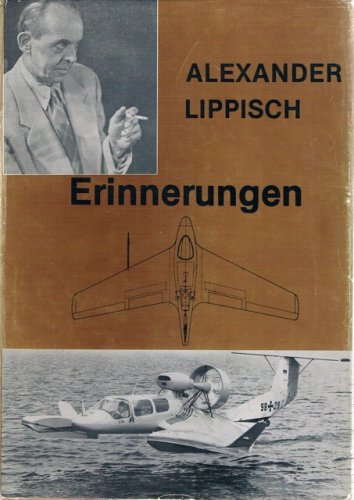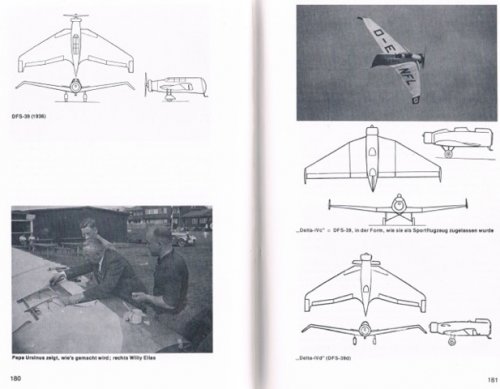- Joined
- 25 June 2014
- Messages
- 1,564
- Reaction score
- 1,499
Alexander Lippisch (Trans. Gertrude L. Lippisch); The Delta Wing: History and Development, Iowa State University Press, 1981.
Translation of:
Alexander Lippisch; Ein Dreieck fliegt, Motorbuch-Verlag, 1976.
This is a stunning little book, profusely illustrated. It will make your eyes bleed.
It covers not only the deltas but the related swept tailless and the odd few canards as well, before finishing off with his ekranoplanes, or "aerodynes" as he called them. It lists all his aircraft, whether tailless or conventional. Dozens and dozens of the blighters, every one a SecretProjects heartthrob. Among other beauties you will find a WWII project for a four-engined flying wing bomber of 50.6 m span, comparable to the postwar Northrop YB-35's span of 52.2 m.
I ordered a library copy, picked it up today, am only allowed to keep it for a couple of weeks <sob!>.
If you have a specific question, post here or drop me a PM and I will do my best to answer it.
Personal nugget to date: his work from ca. 1930 built on a German theoretical study, itself based on work picked up on a visit to England. I'm guessing GTR Hill here. And we all know that Hill was inspired and influenced by the father of the stable tailless aeroplane, J W Dunne.
Translation of:
Alexander Lippisch; Ein Dreieck fliegt, Motorbuch-Verlag, 1976.
This is a stunning little book, profusely illustrated. It will make your eyes bleed.
It covers not only the deltas but the related swept tailless and the odd few canards as well, before finishing off with his ekranoplanes, or "aerodynes" as he called them. It lists all his aircraft, whether tailless or conventional. Dozens and dozens of the blighters, every one a SecretProjects heartthrob. Among other beauties you will find a WWII project for a four-engined flying wing bomber of 50.6 m span, comparable to the postwar Northrop YB-35's span of 52.2 m.
I ordered a library copy, picked it up today, am only allowed to keep it for a couple of weeks <sob!>.
If you have a specific question, post here or drop me a PM and I will do my best to answer it.
Personal nugget to date: his work from ca. 1930 built on a German theoretical study, itself based on work picked up on a visit to England. I'm guessing GTR Hill here. And we all know that Hill was inspired and influenced by the father of the stable tailless aeroplane, J W Dunne.


